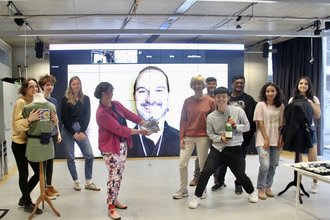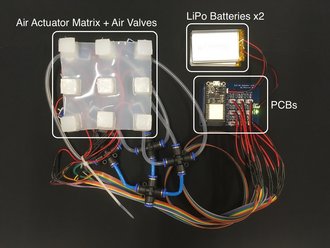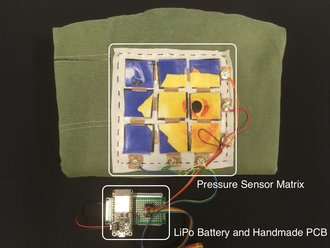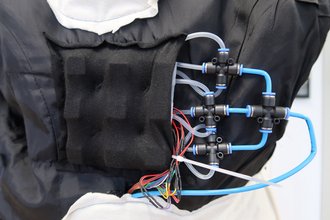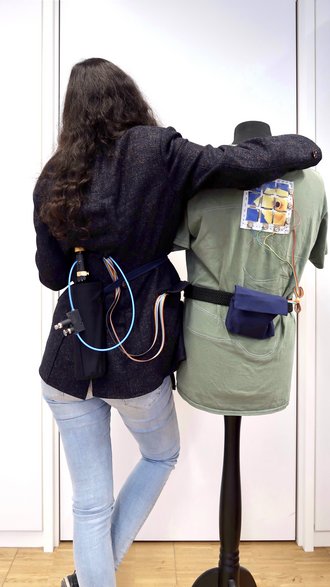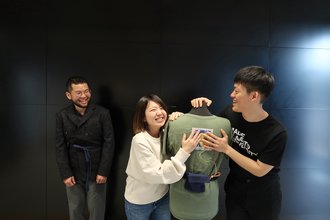Hugging Suit _ Pneumatically-Actuated System Design for Haptic Experiences
COVID-19 pandemic dramatically changed our usual ways of human interaction and highlights the demand for remote haptic communication since most restrictions relate to avoiding physical contact. Especially for international students and staff, having a physical hug from family and friends became an extravagant wish, because of the high travel costs and time-consuming. This research aims at realizing remote and real-time haptic communication with Hugging Suit, a novel Air Actuators Matrix and Pressure Sensor Matrix that produce in the McKibben muscle structure, two-point discrimination values, and E-textile and provide pixelated and programable haptic force to the upper body.
Master-Thesis SoSe 2022
Ruo-Xuan Wu
1st examiner: Professur Human-Computer Interaction
Prof. Dr. Eva Hornecker
2nd examiner: Professur Darstellungsmethodik
Dr. Sabine Zierold
3rd examiner:
Dr. Luke Espanhol, Director, Master of Interaction Design and Electronic Arts, University of Sydney
In contrast to present pneumatically-actuated wearable systems, Hugging Suit 2.0 adopts a high-pressure air tank to reduce the weight of the device and the distraction of air compressors to give the full portability for the user experience. Following the frame of Research through Design (RtD), the thesis iterated the design, production, and evaluation of the Hugging Suit, and present the evolutions of the pneumatic hardware and force control algorithms from first to second prototypes, coupled with two user studies involved 71 participants and addressed portability, wearability, and the fidelity of the hugging simulation. Further, the investigation found that low-lit, comfortable, private, and being able to see the hug giver are the preferred environments so that the future related user scenarios of the Hugging Suit and design can be identified accordingly. Finally, the potential applications of the Hugging Suit, such as massage, “Hmoji,” “Hugging Passwords,” and memorizing the deceased loved people were found in the user study feedback.

